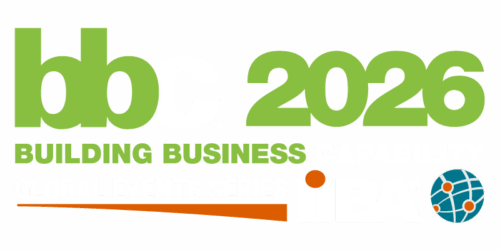Like the well-intentioned Dr. Frankenstein, ambitious practitioners who combine incongruent frameworks often unleash a scary transformation monster whose confusing jargon and appearance strikes panic and fear in stakeholders. In this session we will cover how to navigate complexity to realise what is possible in your transformation journey using a Human Centered Design based approach.
Learning Objectives:
- Understand what creativity means for business today
- Explore the benefits of building multidisciplinary teams
- Understand the concept of business design
- Review case studies where unleashing creativity produced strong business outcomes
Your enterprise vocabulary matters! Often the development of glossaries, data dictionaries, and other vocabulary artifacts are derived from other architecture development efforts. Stop treating your enterprise vocabulary as a second citizen! A controlled vocabulary drives the development of better integrated and federated architectures helping to reduce ambiguity, apply creativity and manage complexity. In this session, participants will learn how to use a vocabulary-driven development process that encourages the use of a common term for the same concept. Learn how this universal technique works within a multi-framework environment. Learn how to align your enterprise vocabulary and ontology practically. Leave this session with not only the knowledge but the how-to guidance to make an impact on your organization immediately.
Learning Objectives:
- Recognize how vocabulary driven architecture can reduce modeling ambiguity in architecture
- Identify the steps in the minimum model development procedure
- Construct enterprise-level governance using a vocabulary driven approach.
Delivering better Customer-journeys and Architecture with limited resources – how do we do it?
The municipalities in Denmark have been introduced to new Danish regulations and expectations and must therefore rethink and rebuild their business architecture.
The municipalities don’t have the resources to just go out and hire a vast number of architects for the challenge. The solution is to educate, the already invested employees at the municipalities, in business design and architecture. The goal is to teach the staff of Danish municipalities to understand and change their old organisation into a new agile organisation to meet the new demands.
Klaus is leading the effort to accomplish this across Denmark.
Learning Objectives:
- How to do architecture with limited resources
- How to change an old organisation into a new agile organisation
- How to Deliver better Customer-journeys
Since the inception of commercial use of electrical equipment (analog and digital, wired boards and stored programming technologies) for business, the focus has been on increased productivity: improving quality, reducing time and cost. The responsibility for technology implementations and operations historically has been within the purview of the Information Community, in the early days called EDP or ADP … later named DP or I/S or MIS … and then IM and now, typically IT. This has been and still is “Building and Running Systems.”
However, the focus is changing: the Digital Revolution, Business Intelligence, Analytics, Artificial Intelligence, Internet of Things … Robotics, etc. Today the challenge no longer is simply productivity: improving quality, saving time and money. Today’s challenge is designing the Enterprise to accommodate structural and disruptive change while seamlessly maintaining operations and, at the same time, avoiding major re-development projects. THIS is Enterprise Architecture … which is different from building and running systems.
Learning Objectives:
- IT Motivation that presently pervades the industry
- IT Motivation that INVADES the industry future
- IT Strategy that satisfies Motivation, future and present
Architecture is a critical enabler of business agility, digital transformation, flexibility, stability, performance, operational excellence, and business success. However, architecture often struggles to keep up with the pace of business or make the cultural and process changes required, and has often failed to deliver on its promise. New realities require new architectural thinking.
The new world is dynamic, decentralized, data driven, automated, and self-learning. The skills of an architect – big picture, critical thinking, system thinking, abstraction, conceptualization, visualization – are all still important, but the environment for using them, the goals for applying them, and the stakeholders that you deliver them to are different.
This presentation explores how architects can unleash their creativity in this brave new world to build influence, create value and challenge the status quo.
Learning Objectives:
- The role of architecture in the age of Agile and DevOps
- New ideas for creative architecture
- Applying core architectural principles with new stakeholders
